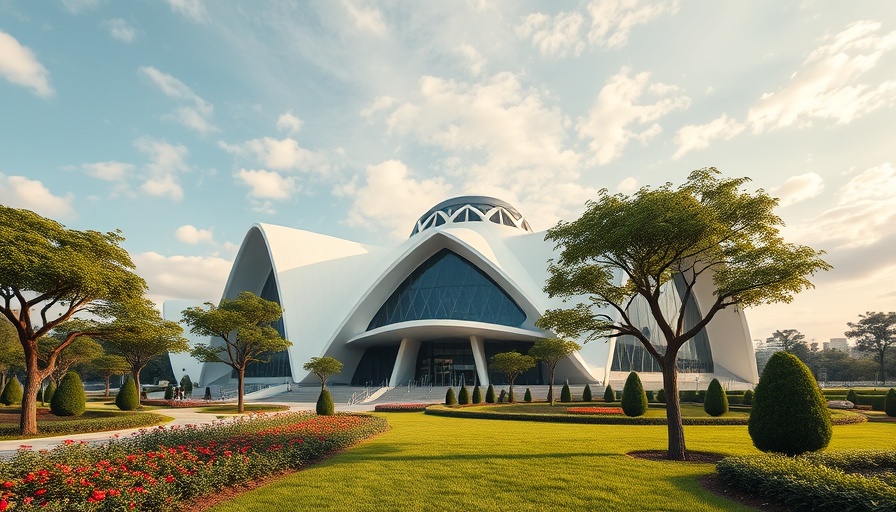
The Uncertain Future of Accra's National Cathedral
The recently unveiled prospects regarding Ghana's National Cathedral, designed by Adjaye Associates, cast a rather ominous shadow over its future. Commissioned in 2018, this monumental project aimed to become a cornerstone of architectural beauty in Accra but has now faced serious scrutiny from the Ghanaian government.
Political Controversies Surrounding Design Contracts
Reports indicate that Ghana's President John Dramani Mahama's office is embarking on terminating existing contracts linked to the National Cathedral. This decision, stemming from allegations of mismanagement and illegal hiring practices against Adjaye Associates, raises significant concerns about the project's viability. Many question whether the funds allocated can justify the cathedral's ambition, especially as allegations of impropriety loom large.
Understanding the Architecture’s Goals
The vision for this cathedral was not merely to create a religious center, but to symbolize national unity and cultural pride. However, such ideals have been overshadowed by issues surrounding its costs and procurement processes. The project's critics argue that the cathedral's funding could be allocated more effectively in other sectors, like education and healthcare, thus presenting a pressing conversation about national priorities.
The Broader Implications of Halting Projects
Halting the National Cathedral project could have ripple effects throughout Accra, impacting local businesses that anticipated economic benefits from increased tourism and job creation. While the need for due diligence is paramount, the community must balance this with the vision of fostering a vibrant public space that represents Ghana's rich heritage. This debate also underscores important lessons about the accountability of public projects and the importance of transparency in governmental operations.
Global Perspective on Architectural Investment
This controversy is not unique to Ghana. Across the globe, high-profile architecture projects often find themselves under the microscope, facing accusations of inflated budgets and questionable contracts. For digital nomads and remote workers, the implications of such controversies highlight the volatile nature of investment in public infrastructure. As these projects reflect broader societal values, they reveal how urban landscapes can define public spaces, impacting where individuals choose to establish their work environments.
Acting on Availability and Comfort Amid Uncertainty
Digital nomads, particularly those engaged in creating efficient remote workspaces, can draw from this case. As development and financing fluctuate, remote workers should focus on utilizing available resources effectively. Ensuring workspace comfort and organization is crucial—like using adjustable standing desks or creating zones that allow both focus and relaxation—while remaining adaptable to changes in the local economy.
Questions Worth Considering
As stakeholders in this project grapple with the complexities of governance and architectural ambition, the community is left to ponder key questions:
- What are the long-term benefits of such iconic structures for local communities?
- How does transparency influence public trust in governmental projects?
- What alternative solutions can emerge from this controversy that serve the public interest better?
In closing, it’s vital for remote workers and citizens alike to stay informed about these types of urban developments, as they help shape not only the physical environment but also societal expectations. Every workspace, whether at home or abroad, is influenced by its surroundings, so advocating for informed decision-making in infrastructure becomes a responsibility shared by all.
If you are in search of more insights to create a conducive workspace in these unpredictable times, consider exploring ergonomic designs tailored for remote work. Understanding how to leverage your environment for productivity can transform not just your workspace, but your entire professional journey.
 Add Row
Add Row  Add
Add 




Write A Comment